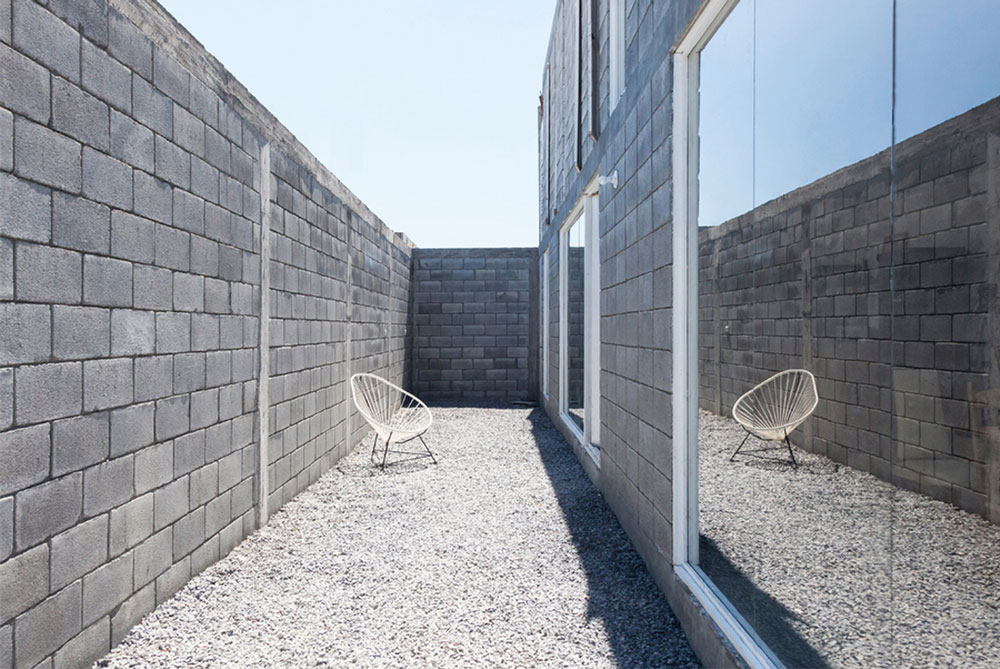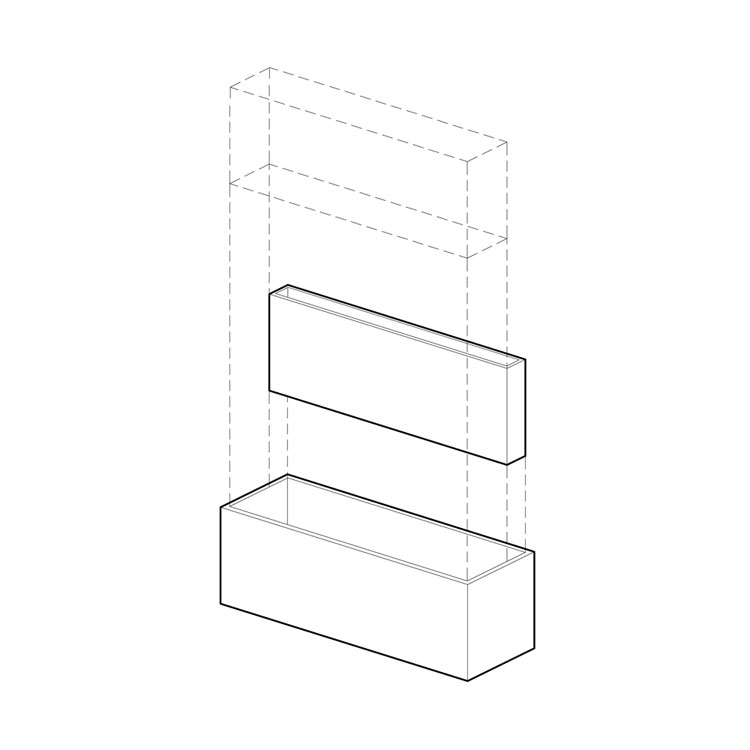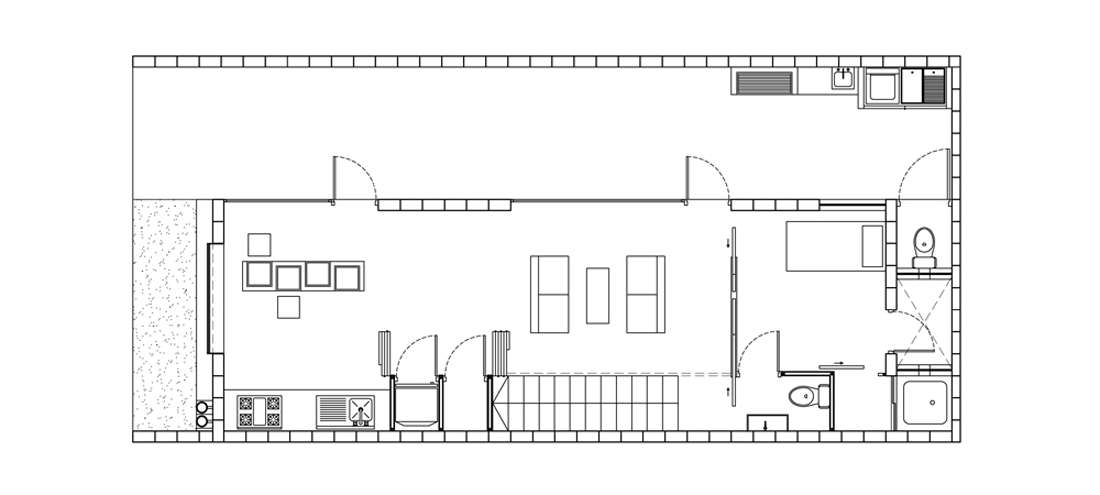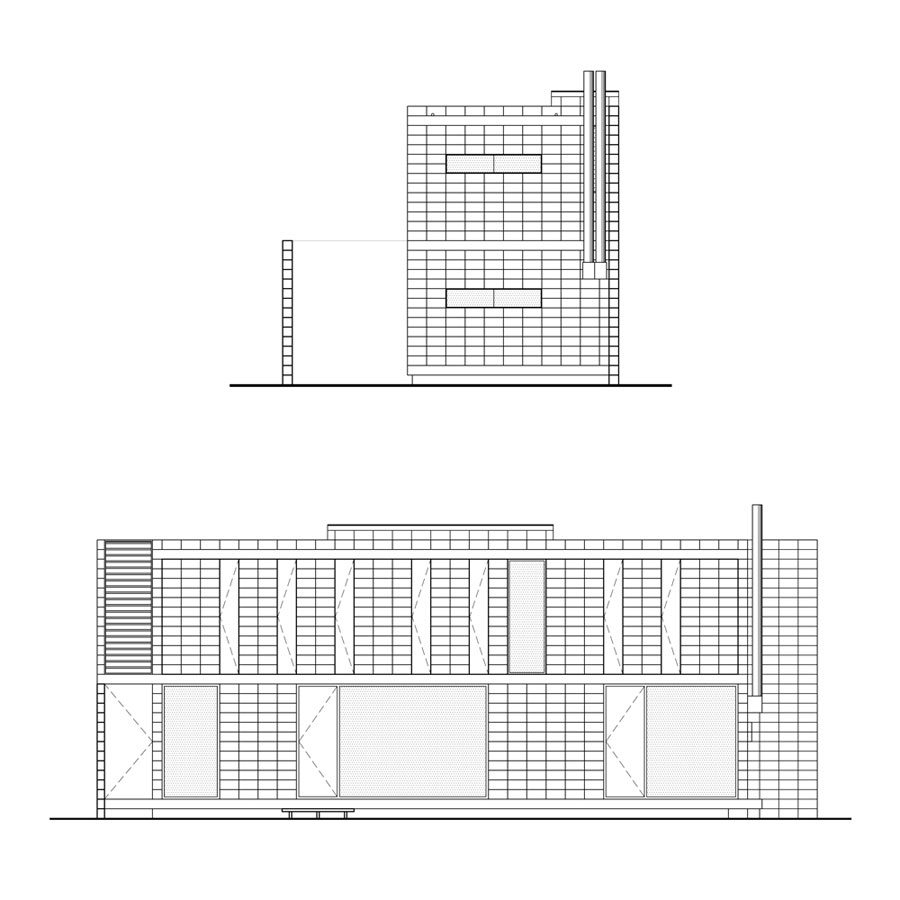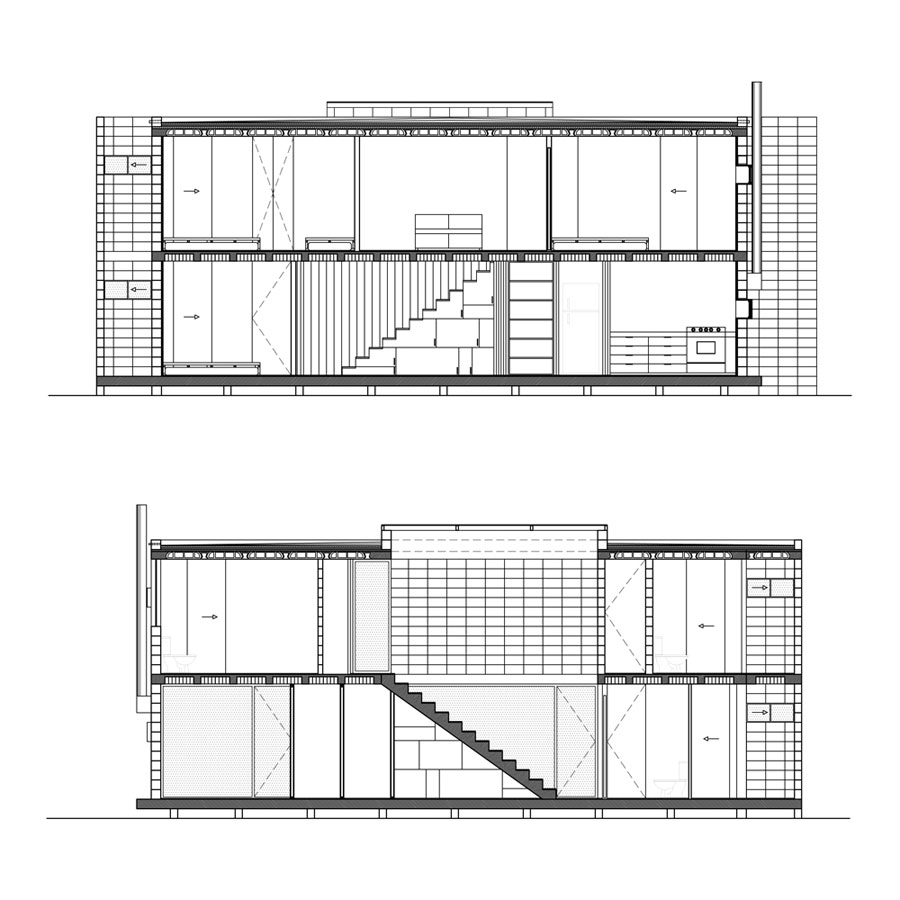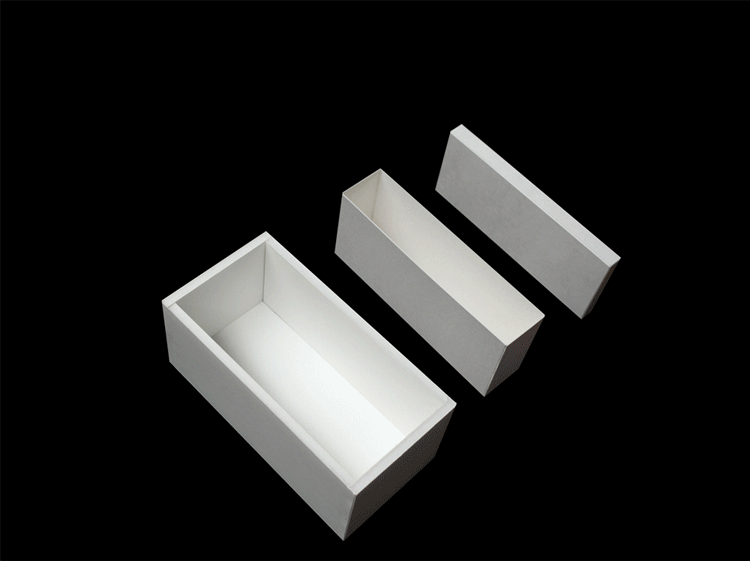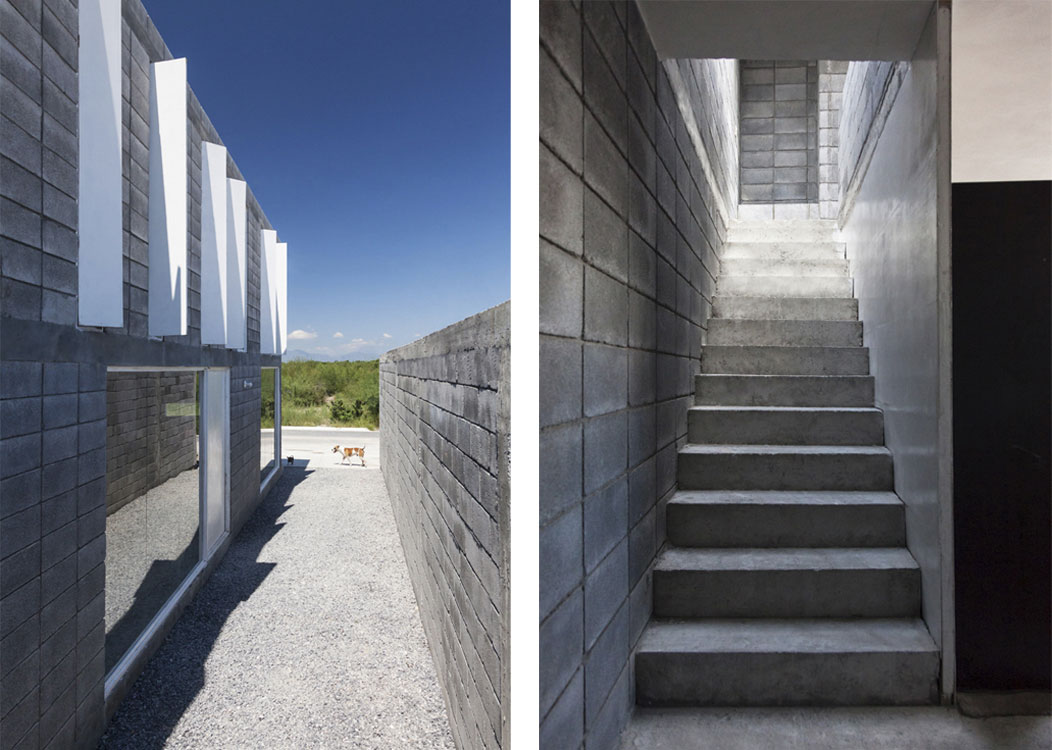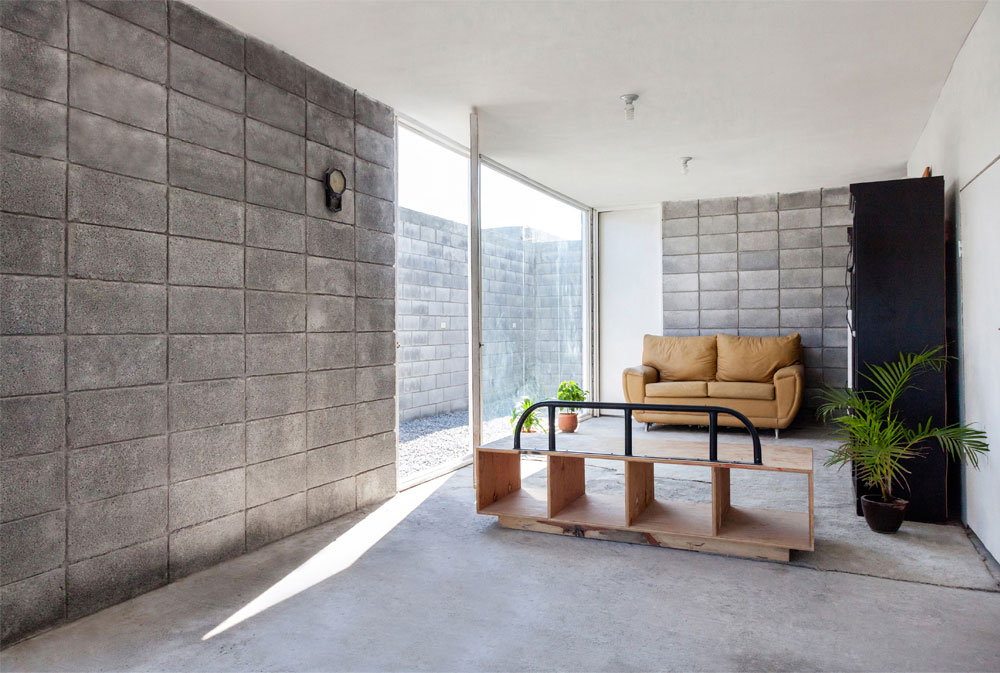This project aims to create an affordable and viable house typology for low-to middle-income families. The plot is located within a suburban area of General Zuazua in Nuevo Leon State, Mexico. It has standard dimensions of 7m x 15m. The local government and most of the real estate developers in the area have predetermined these dimensions.
As a social architecture project, the construction methodology pursues an active participation of the future users, for example by having future tenants help in the construction. This way they start putting down roots by being implicated in the project and committed to its development.
The families that are supported by Comunidad Vivex have one or more members with ties to the construction industry. This make it easier for them to understand and execute the projects. Paradoxically, it happens to be very common for construction workers not to own houses. They often have to pay rent on a place to live with their families. Many times, their quarters do not have enough space, lighting, ventilation or healthy living conditions.
These laborers are a very vulnerable segment of Mexican society because of the instability of the trade. They are constantly moving from one construction site to another, from one boss or company to another, making it almost impossible for them to save money or be elegible for a loan or enter the government’s housing program.
How does the community and participatory methodology work?
As a non-profit organization, Comunidad Vivex provides the construction materials through different sponsors, as well as technical consultancy from the designers of the houses (in this case, S-AR).
The benefitted family owns the land and, together with co-workers, family members and friends, they contribute the labor week by week. As a result, the cost is reduced significantly and the value of teamwork is enhanced within the
family. The construction process is a learning process that generates knowledge, while transmitting principles and values. By building their own home manually, the family learns a new trade, improving their skills so they can
make more money in the future.
From the beginning, weekly meetings are planned with everyone involved. The family is an active participant in the design process and the supervision of the construction.
Jesús Galván is a 32-year-old construction worker. His wife, Norma Alicia, his older son Jesús Alejandro, and little daughters, Yareli Guadalupe and Kelly Yojana, complete the family. For years they have lived in a room they rented
from an acquaintance.
Thanks to his work, two years ago Jesús started to put money down on a plot of land in the Zuazua community, on the outskirts of the metropolitan area of Monterrey, where he usually works. He is still paying for it, but it is almost paid off.
This project has helped Jesús Galván’s family to have their own house. This will give them a quality space that can help toward the development of the family and the achievement of other goals, such as health and education.
Cost / Time
The cost of the house, including the donated materials and workforce for the metalwork and glass, was about US$11,600.
With the consultancy from the designers, Jesús was able to do the electrical and plumbing installations, carpentry, foundations, structure, walls, slabs, some metalwork, window installation, painting, and waterproofing for the house. This experience also provided him with professional growth.
The project is a two-story 110 sq.m house, with the option of expanding in the future.
The construction times for this kind of projects are longer than typical construction projects, because the workforce depends entirely on the availability and desires of the family. Usually, they work one to two days a week so they can
continue with their daily activities and their regular jobs. The timeframe is also affected by the in-kind donations and money received to the non-profit organization.
Plans
Elevations
Sections
Project
The house is defined as a box, which contains other boxes inside. The first box is placed in the middle of the plot, and one side is left unbuilt. This generates a side yard that brings in natural lighting and ventilation to the house. At the same time this free space can be used like an expansion for social activities defined by the first floor of the house. One bedroom is located on the ground floor. It is currently used by the older son, but in the future it will be for the parents as they get older.
The dining and living room are located in the open space on the first floor. The stairwell leaves some open space, where furniture from the living room and kitchen can be stored. A productive activity, such as a grocery store or another type of shop could be set up in this space.
Another box is built on the other side to house the domestic hot water and electric installations and also the stairs.
The private area is located on the second floor, with a family room and two independent rooms. One side of this level has an enclosure behind doors, allowing the user to regulate the privacy, lighting and ventilation in the rooms. Opposite this area, a more open enclosure on the lower level is linked with the side yard.
The house was built using concrete blocks that do not overlap so it had to be reinforced. Reinforced concrete slabs are light-weighted with clay blocks. The enclosures are made of wood and glass with wooden bars. The house is designed
as permanent housing, at a habitable stage with the possibility for future improvement.

